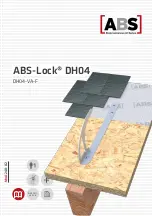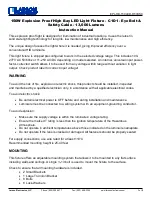
B-42
8) Continuare a estendere il cilindro fino
a piazzarlo a terra, senza scaricare
completamente le sospensioni del
veicolo.
Ripetere le medesime operazioni per i
restanti punti di stabilizzazione della
macchina tramite le leve ST1 e ST3
(vedi §B.4.3).
Attenzione: le leve di comando
sul lato opposto sono invertite.
Terminate le operazioni di stabiliz-
zazione è necessario premere la leva
DEV per poter movimentare la gru.
Il non corretto bloccaggio dei
cilindri stabilizzatori può causare il
ribaltamento dell'autocarro durante
le operazioni di lavoro (vedi §A.1.7).
È possibile lavorare con la gru
solamente quando gli stabilizzatori
sono piazzati correttamente.
8) Extend further the stabilizer leg till to
place it on the ground, without fully
discharging the vehicle’s suspensions.
Repeat the same operations for the
other machine stabilizing points with the
levers ST1 and ST3 (see §B.4.3).
Warning: the control levers on
the opposite side are inverted.
When the stabilizing operations are
over, push the lever DEV, to can move
the crane.
If the stabilizer legs are not
correctly locked, the truck can
overturn during the work operations
(see §A.1.7).
Working with the crane is
allowed only when the stabilizers are
correctly deployed.
8) Dann den Stützzylinder weiter
ausfahren, bis er den Boden berührt,
ohne dabei die Fahrzeugfederung
vollständig zu entlasten.
Das gleiche Verfahren für die restliche
Stützenstellen der Maschine mit den
Hebeln ST1 und ST3 wiederholen
(siehe §B.4.3).
Achtung: die Steuerhebel auf
der Gegenseite sind invertiert.
Wenn die Kranstabilisierung beendet
ist, ist es notwendig den Hebel DEV zu
drücken, um den Kran bewegen zu
können.
Wenn die Abstützbeine
unrichtig blockiert sind, Kann der
LKW während der Kranarbeit
umkippen (siehe §A.1.7).
Die Arbeit mit dem Kran ist
nur dann erlaubt, wenn die
Abstützungen richtig eingestellt sind.
ST2
+
ST1
IN
















































